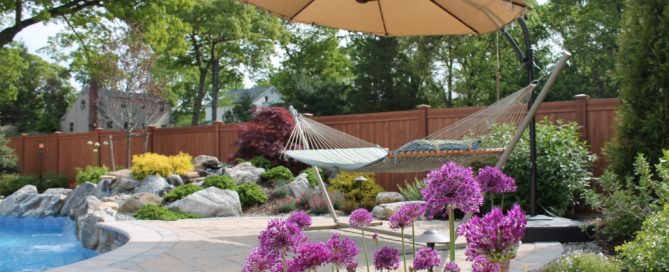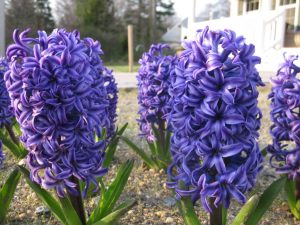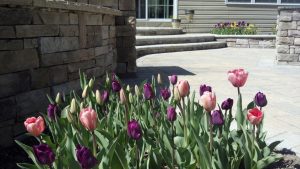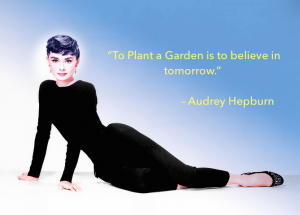Why Fall is the Best Time of Year to Plant Your Spring Garden
Updated 10-5-23
In autumn, floras slowly begin their dormancy process making fall the ideal time to plant your trees, shrubs, and perennials for a beautiful spring garden.
The best time for the actual planting is late October, early November. This allows ample time for a necessary chilling period for the bulbs in order to flower later.
This all takes a little planning — so right now is a great time to plan what bulbs etc. are going where and what you’ll need to install them.
Bulbs, such as Daffodils, Tulips, Hyacinths, Allium, Crocus, Lilies, etc. all add their own unique color, texture, height, sun and shade tolerance; and some, like Hyacinths, have delightful fragrance.
Installing the Bulbs
“The temperatures around late October are cooler during the day and overnight,” says Deck and Patio’s Dave Stockwell. “So plants require less watering. In addition, they are using less energy to push out foliage and roots.
“That said, proper watering will be necessary for the first two weeks after planting to ensure they ‘heal’ themselves in for the winter.”
How you install bulbs is probably the most important aspect of ensuring they flower the following spring.
Each type of bulb has its own specified planting depth and spacing. It is extremely important that you follow this rule (see following depths). If not, the bulbs will not flower or may not leaf out.
(Take care that the pointy tip of the bulb must be planted straight up; otherwise the bulb will definitely not perform as intended.)
Planting Depths for Spring Bulbs
Alliums: 8 inches
Crocus: 3 inches
Daffodil: 6 inches
Hyacinth: 7 inches
Tulips: 6 inches
More Tips
— Best Soils for Bulbs: Bulbs grow well in many different soil types. But the one site they won’t enjoy is heavy, poorly draining soils. Ideally you should plan to plant in soils that are organically rich, slightly acidic, well-drained sandy loams or loamy sands.
— Should You Compost: Compost is not necessary to layer on top. If you feel your soil is lacking organic matter, you will be better off incorporating compost into the top 6” of soil before planting. Mix bonemeal or superphosphate with the soil at the bottom of the planting hole, or incorporate it into the soil around each bulb’s planting hole.
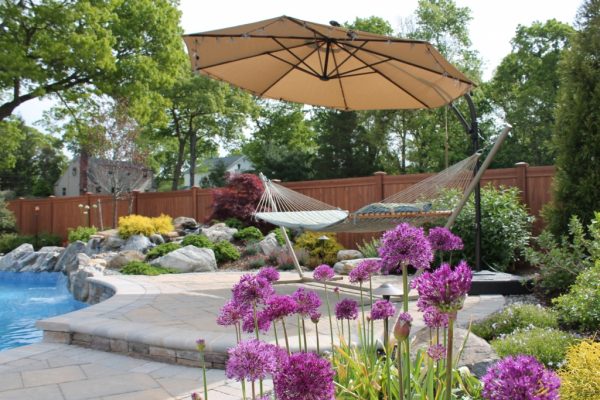
Foreground: Purple Allium Sphaerocephalon
Everyone wants bright cheery flowers telling us winter is finally over. Well, such welcome beauties grow from bulbs planted in the chilly weather of fall. For the Purple Allium seen in the foreground here of a Deck and Patio client’s yard, the best time to plant these bulbs is in September or October here in the northeast. Plant the allium about 4-8 inches deep and 6-8 inches apart. And as we said above, ensure their pointy ends are up. Water well once.
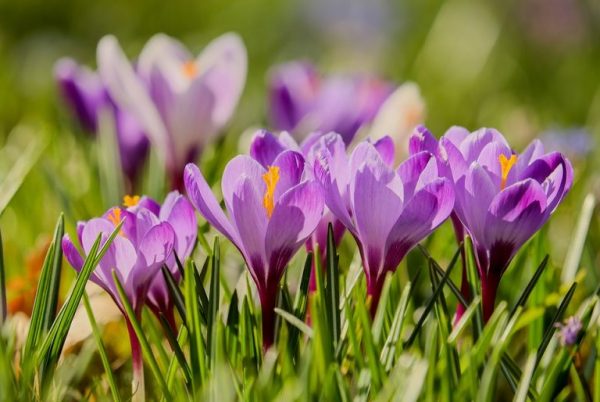
Crocuses: Colorful crocuses are often the first flower you see in spring. More good news: they return year after year.
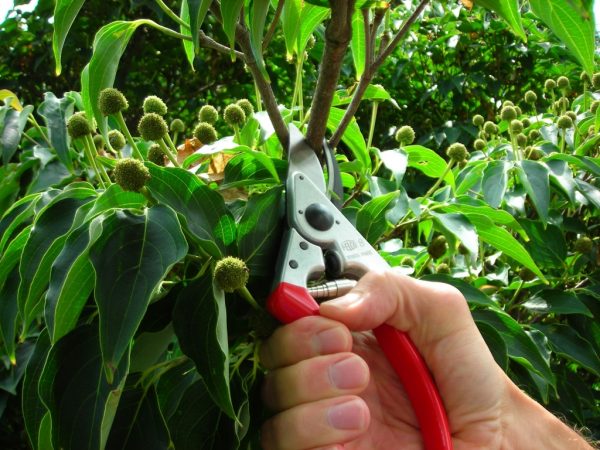
Berkshire Botanical Garden
“Early fall is also a good time to prune your plants,” says Dave. “Don’t wait too late into fall to prune as frost can damage the stems that have been cut. They need time to callous over. Otherwise, this might inadvertently cause the tree and/or shrub to not bloom or have significant die back.”

